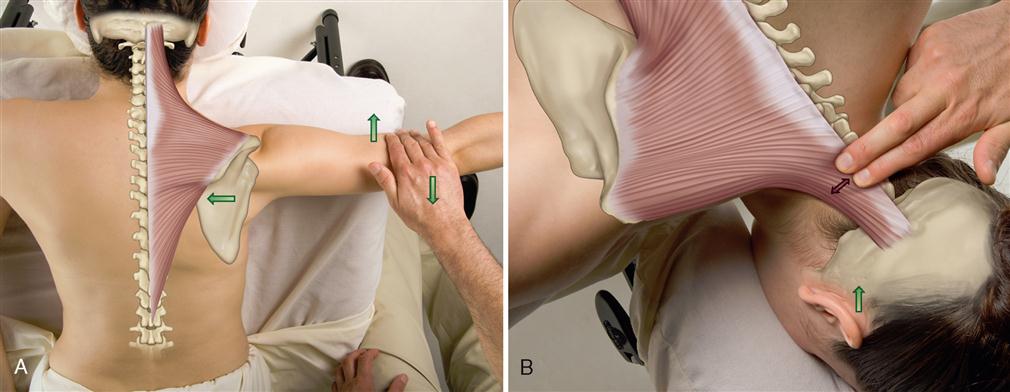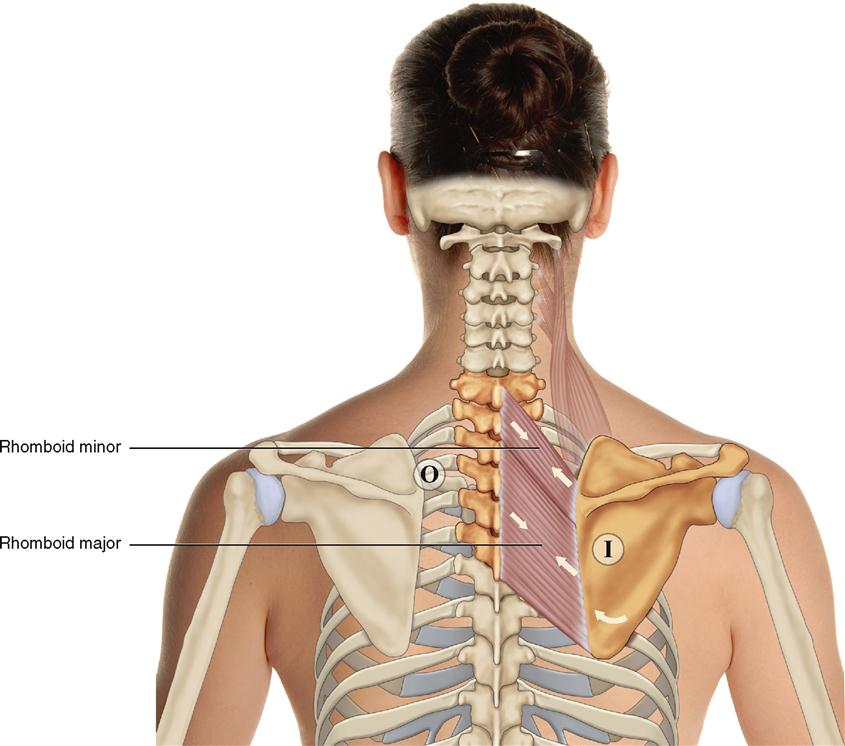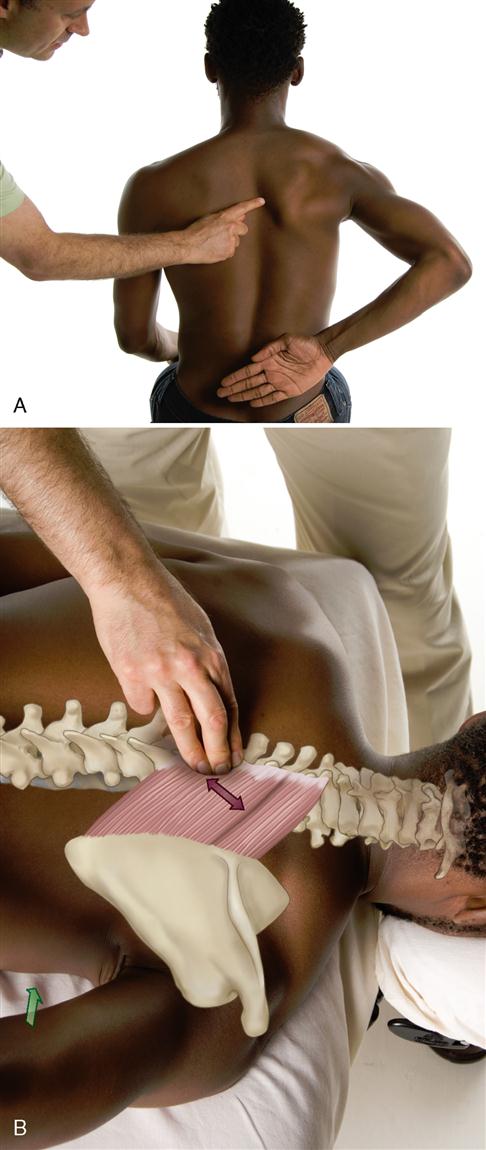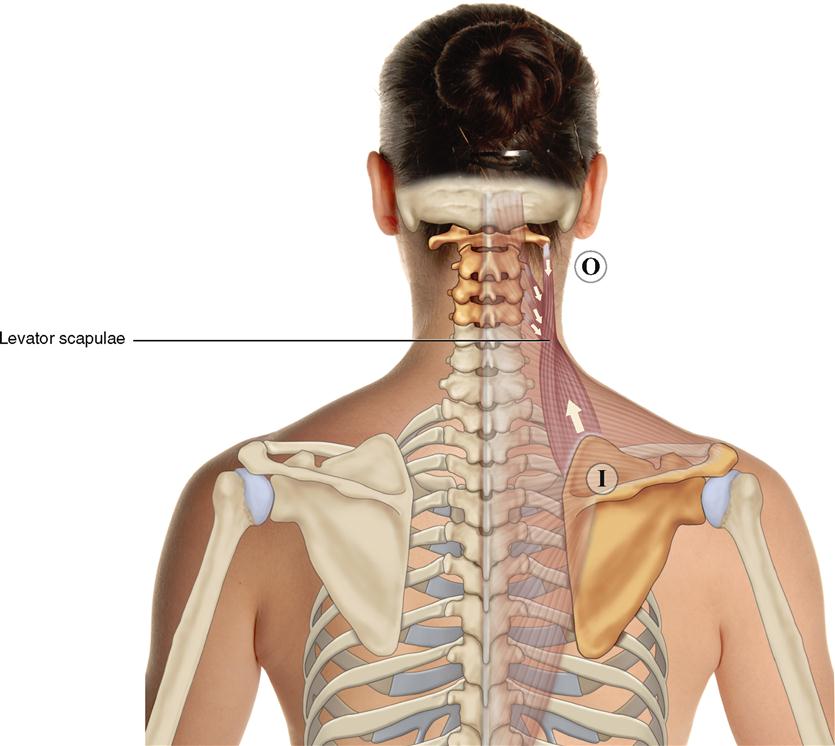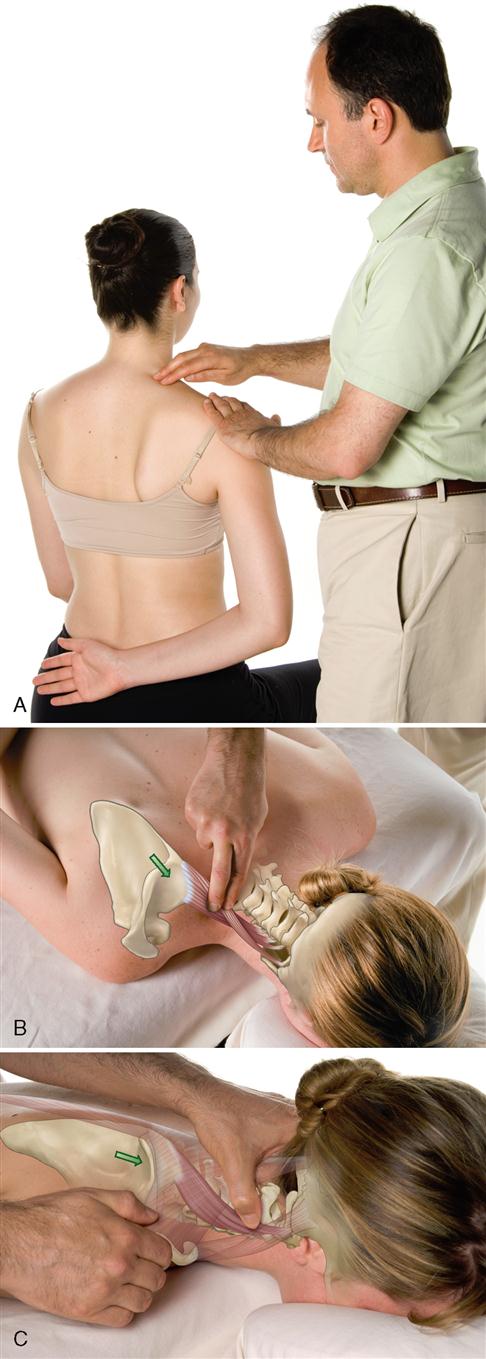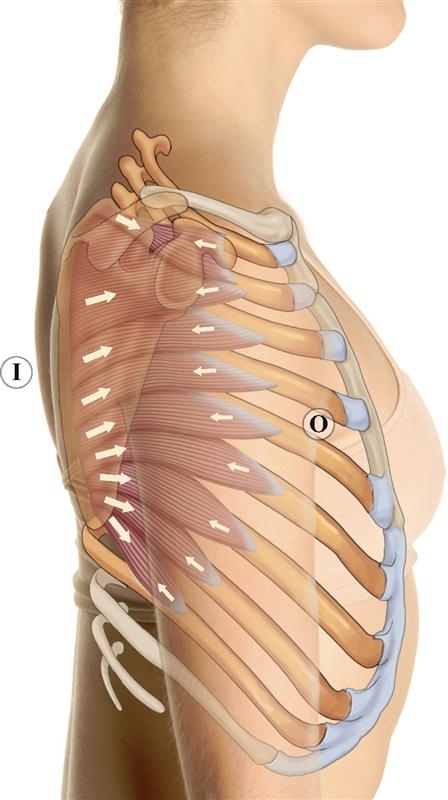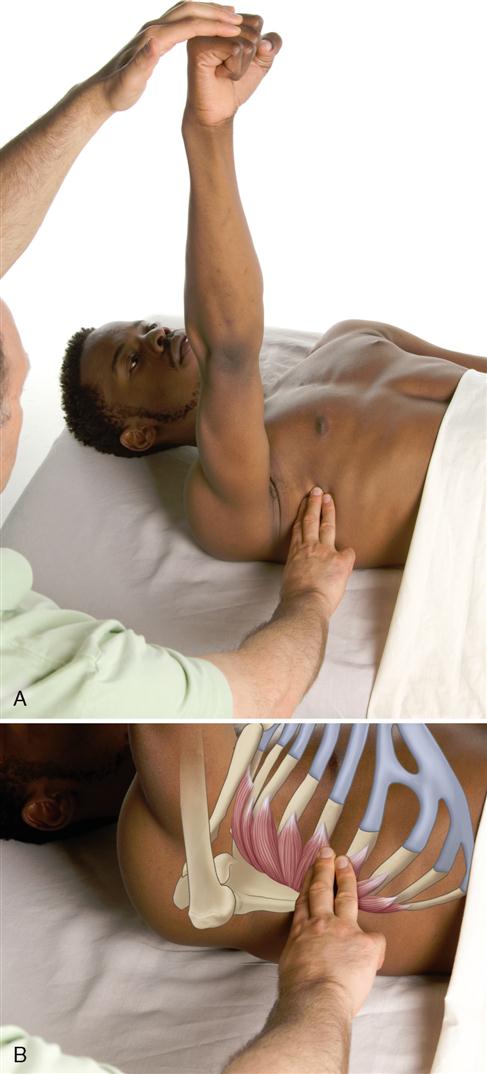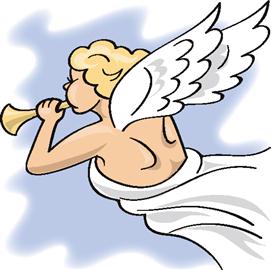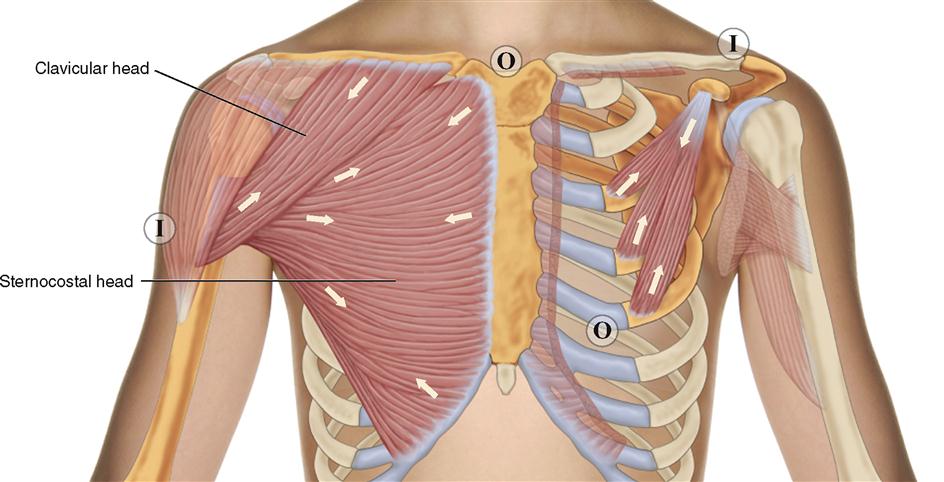Muscles of the Shoulder Girdle and Arm
The muscles of this chapter are involved with the motions of the shoulder girdle (scapula and clavicle), arm (humerus), and forearm (radius and ulna). The bellies of these muscles are located on the trunk, over the scapula, and on the arm. Trapezius, latissimus dorsi, and pectoralis major are large superficial muscles located on the trunk. Deltoid, triceps brachii, and biceps brachii (and to some degree the brachialis) are large superficial muscles located on the scapula and arm.
As a general rule, muscles that move the shoulder girdle have their origin (proximal attachment) on the trunk and their insertion (distal attachment) on the scapula or clavicle or both. These muscles move the scapula relative to the rib cage wall (trunk) at the scapulocostal joint and/or the clavicle at the sternoclavicular joint.
Muscles that move the arm have their origin (proximal attachment) on the trunk, clavicle, or scapula and their insertion (distal attachment) on the humerus. These muscles move the arm relative to the scapula at the glenohumeral joint.
Muscles that move the forearm have their origin (proximal attachment) on the scapula or humerus and their insertion (distal attachment) on the radius or ulna.
The companion CD at the back of this book allows you to examine the muscles of this body region, layer by layer, and individual muscle palpation technique videos are available in the Chapter 6 folder on the Evolve website.
OVERVIEW OF FUNCTION: MUSCLES OF THE SHOULDER GIRDLE
The following general rules regarding actions can be stated for the functional groups of muscles of the shoulder girdle:
OVERVIEW OF FUNCTION: MUSCLES OF THE GLENOHUMERAL JOINT
The following general rules regarding actions can be stated for the functional groups of muscles of the glenohumeral joint:
 Reverse actions of these standard (typical) mover actions involve the scapula being moved relative to the humerus at the glenohumeral joint (the scapula will also be moved relative to the rib cage at the scapulocostal joint). These reverse actions are usually either rotation or tilt actions of the scapula.*
Reverse actions of these standard (typical) mover actions involve the scapula being moved relative to the humerus at the glenohumeral joint (the scapula will also be moved relative to the rib cage at the scapulocostal joint). These reverse actions are usually either rotation or tilt actions of the scapula.*
OVERVIEW OF FUNCTION: MUSCLES OF THE ELBOW AND RADIOULNAR JOINTS
The following general rules regarding actions can be stated for the functional groups of muscles of the elbow and radioulnar joints:
 Reverse actions at the elbow joint involve moving the arm toward the forearm at the elbow joint. This movement usually occurs when the hand (and therefore the forearm) is fixed by holding onto an immovable object.*
Reverse actions at the elbow joint involve moving the arm toward the forearm at the elbow joint. This movement usually occurs when the hand (and therefore the forearm) is fixed by holding onto an immovable object.*
 Reverse actions of these standard (typical) mover actions at the radioulnar joints involve moving the ulna toward the radius at the radioulnar joints. This movement usually occurs when the hand (and therefore the radius) is fixed by holding onto an immovable object.*
Reverse actions of these standard (typical) mover actions at the radioulnar joints involve moving the ulna toward the radius at the radioulnar joints. This movement usually occurs when the hand (and therefore the radius) is fixed by holding onto an immovable object.*
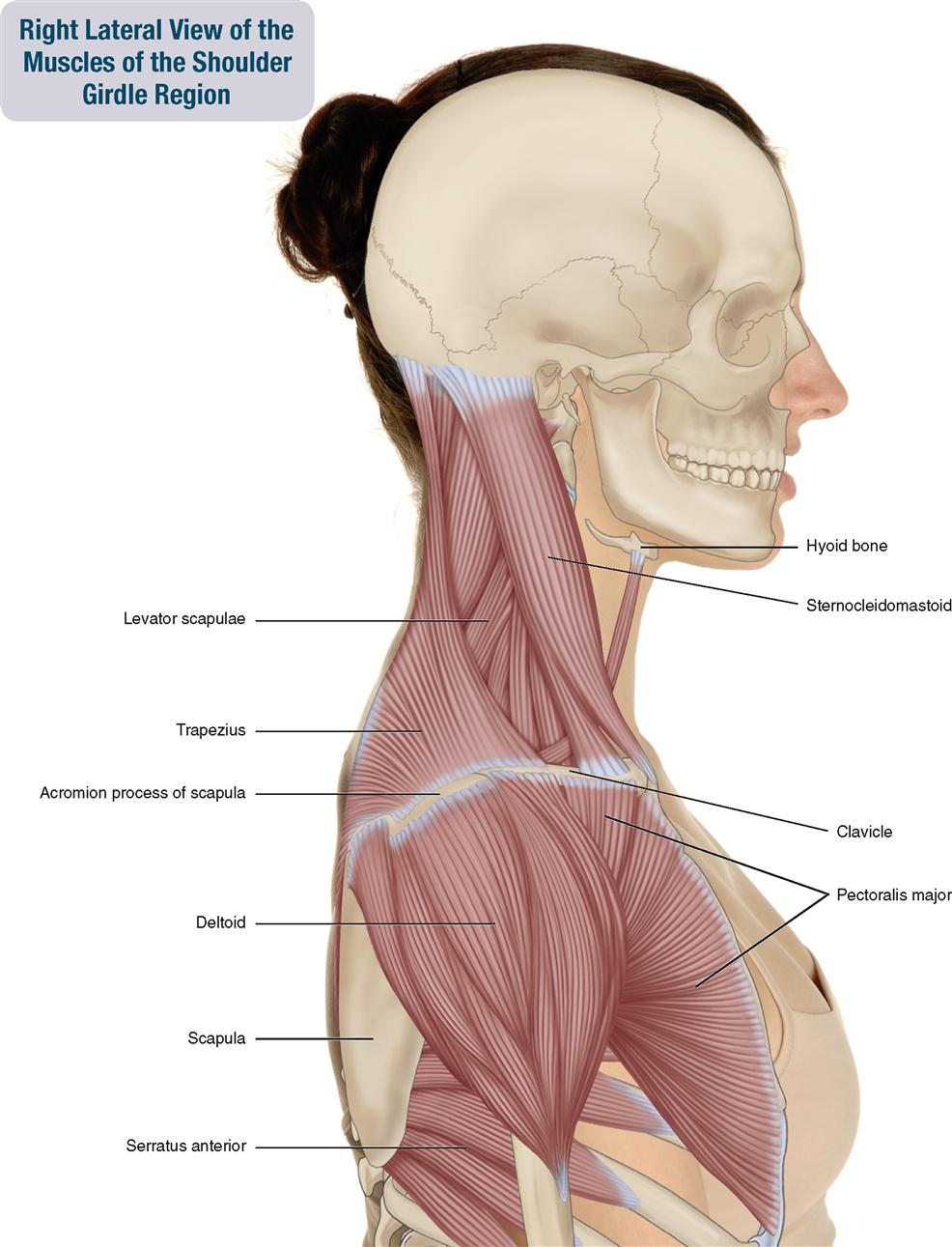
SHOULDER GIRDLE AND ARM
Trapezius
Pronunciation tra-PEE-zee-us
ATTACHMENTS
Origin (Proximal/Medial Attachment)
Insertion (Distal/Lateral Attachment)
ACTIONS
The trapezius moves the scapula at the scapulocostal joint and moves the head and neck at the spinal joints.
Upper Fibers
Middle Fibers
Lower Fibers
STABILIZATION
INNERVATION
PALPATION
1. Ask the client to lie prone with the arm resting on the table at the side of the body.
2. To palpate the lower and middle trapezius, place the palpating finger pads just lateral to the lower and middle thoracic spine. Then ask the client to abduct the arm to 90 degrees with the elbow joint extended; and slightly retract the scapula by pinching the shoulder blade toward the spine. Adding gentle resistance to the client’s arm abduction with your support hand is usually helpful. Palpate perpendicular to the fibers between the spine and scapula (Figure 6-5, A).
3. To palpate the upper trapezius, ask the client to extend the head slightly. Look for the engagement of the upper trapezius and palpate it in the neck up to its occipital attachment (Figure 6-5, B).
TREATMENT CONSIDERATIONS
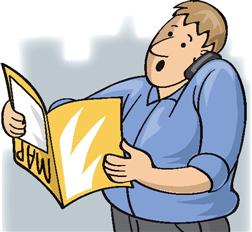
SHOULDER GIRDLE AND ARM
Rhomboid Major; Rhomboid Minor
Pronunciation ROM-boyd MAY-jor • ROM-boyd MY-nor
ATTACHMENTS
Origin (Proximal/Medial Attachment)
Insertion (Distal/Lateral Attachment)
ACTIONS
The rhomboids move the scapula at the scapulocostal joint. Upper fibers:
STABILIZATION
INNERVATION
PALPATION
1. Ask the client to lie prone or sit with the hand resting in the small of the back.
2. Ask the client to lift the hand away from the small of the back.
3. First look for the lower border of the rhomboids to become visible; then palpate the rhomboids between the spine and scapula (Figure 6-7).
TREATMENT CONSIDERATIONS
 Rounded/slumped shoulders is a common postural condition in which the scapulas are protracted (abducted) and depressed and the arms are medially rotated. Considering the rhomboids’ actions of both retraction and elevation of the scapula, when they are weak, they can contribute to this common condition because they are unable to oppose efficiently the tight protractors and depressors of the scapula (pectoralis muscles).
Rounded/slumped shoulders is a common postural condition in which the scapulas are protracted (abducted) and depressed and the arms are medially rotated. Considering the rhomboids’ actions of both retraction and elevation of the scapula, when they are weak, they can contribute to this common condition because they are unable to oppose efficiently the tight protractors and depressors of the scapula (pectoralis muscles).

 A good way to remember the direction of fibers of the rhomboids is to think of them as the “Christmas Tree Muscles.”
A good way to remember the direction of fibers of the rhomboids is to think of them as the “Christmas Tree Muscles.”
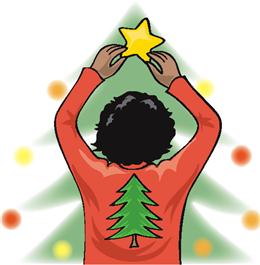
SHOULDER GIRDLE AND ARM
Levator Scapulae
Pronunciation le-VAY-tor SKAP-you-lee
ATTACHMENTS
Origin (Proximal/Superior Attachment)
Insertion (Distal/Inferior Attachment)
ACTIONS
The levator scapulae moves the scapula at the scapulocostal joint and moves the neck at the spinal joints.
STABILIZATION
INNERVATION
PALPATION
1. Ask the client to lie prone or sit with the hand resting in the small of the back (Figure 6-9, A). Place palpating finger pads immediately superior to the superior angle of the scapula.
2. Ask the client to perform a gentle, very short range of motion of elevation of the scapula and feel for the levator scapulae deep to the trapezius (Figure 6-9, B).
3. Continue palpating superiorly until you are off the trapezius and in the posterior triangle of the neck. Now you can ask the client to elevate the scapula more forcefully (Figure 6-9, C).
4. Follow superiorly and anteriorly toward the transverse processes of C1-C4.
TREATMENT CONSIDERATIONS
 Many positions require postural isometric contraction overuse of the levator scapulae. These positions include holding the head inclined anteriorly when working in front of the body using a hand-held electronic device such as a “smart phone,” carrying a purse or bag on the shoulder (regardless of the weight), crimping a telephone between the ear and shoulder, or carrying a heavy weight in the hand.
Many positions require postural isometric contraction overuse of the levator scapulae. These positions include holding the head inclined anteriorly when working in front of the body using a hand-held electronic device such as a “smart phone,” carrying a purse or bag on the shoulder (regardless of the weight), crimping a telephone between the ear and shoulder, or carrying a heavy weight in the hand.
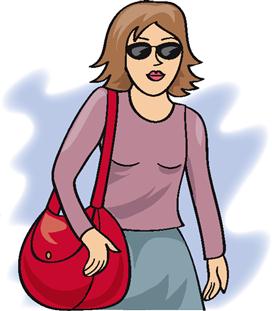
SHOULDER GIRDLE AND ARM
Serratus Anterior
Pronunciation ser-A-tus an-TEE-ri-or
ATTACHMENTS
Origin (Proximal/Anterior Attachment)
Insertion (Distal/Posterior Attachment)
ACTIONS
The serratus anterior moves the scapula at the scapulocostal joint:
STABILIZATION
INNERVATION
PALPATION
2. Resist the client from reaching the hand toward the ceiling (Figure 6-11, A).
3. Palpate the serratus anterior where it is superficial on the rib cage (Figure 6-11, B); then palpate the rest of the muscle, reaching deep to the pectoralis major and the scapula.
TREATMENT CONSIDERATIONS
SHOULDER GIRDLE AND ARM: Pectoralis Group
Pectoralis Major; Pectoralis Minor
Pronunciation PEK-to-ra-lis MAY-jor • PEK-to-ra-lis MY-nor
ATTACHMENTS
Pectoralis Major
Origin (Proximal/Medial Attachment)
Insertion (Distal/Lateral Attachment)
Pectoralis Minor
Origin (Proximal/Anterior Attachment)
Insertion (Distal/Posterior Attachment)
Stay updated, free articles. Join our Telegram channel

Full access? Get Clinical Tree



















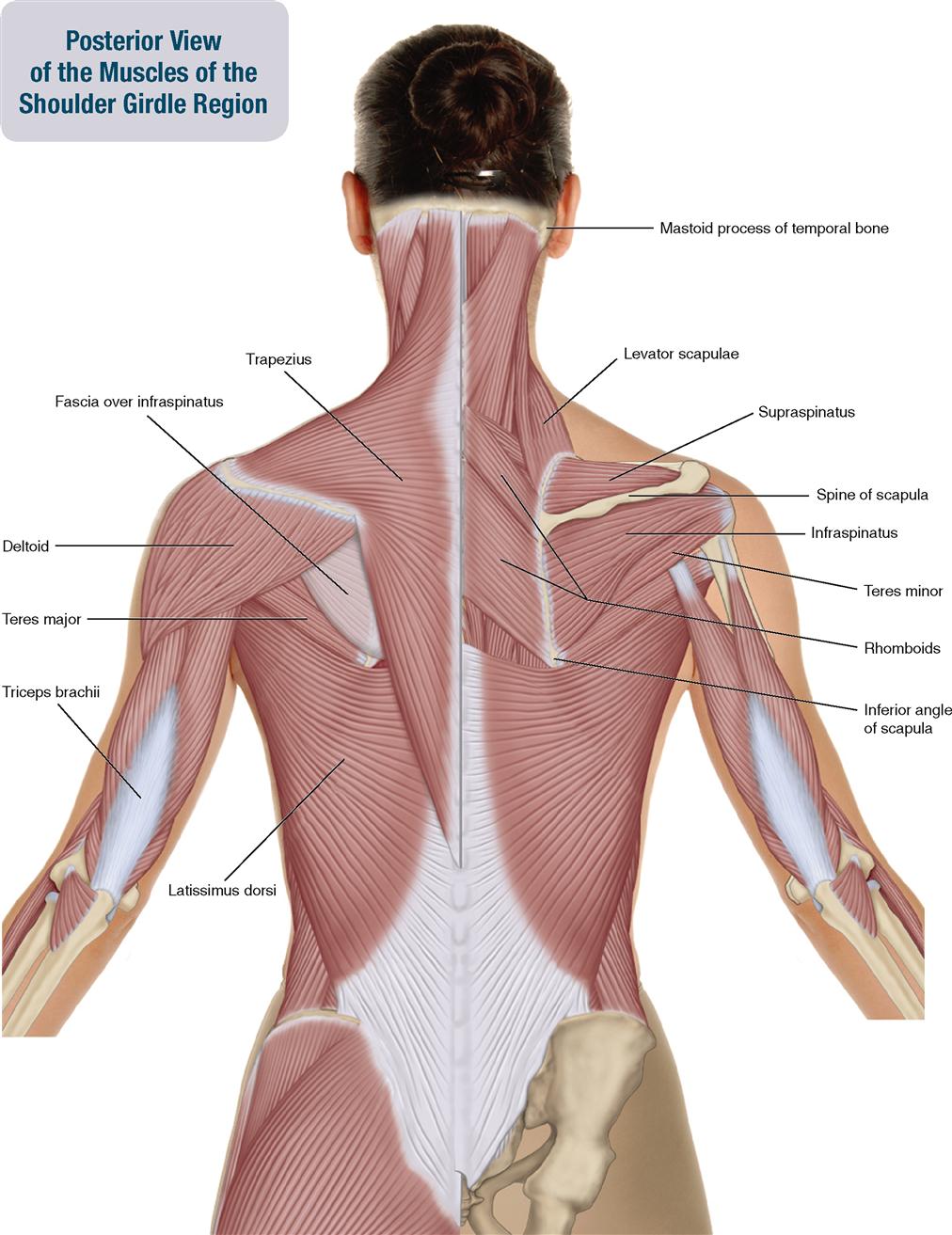
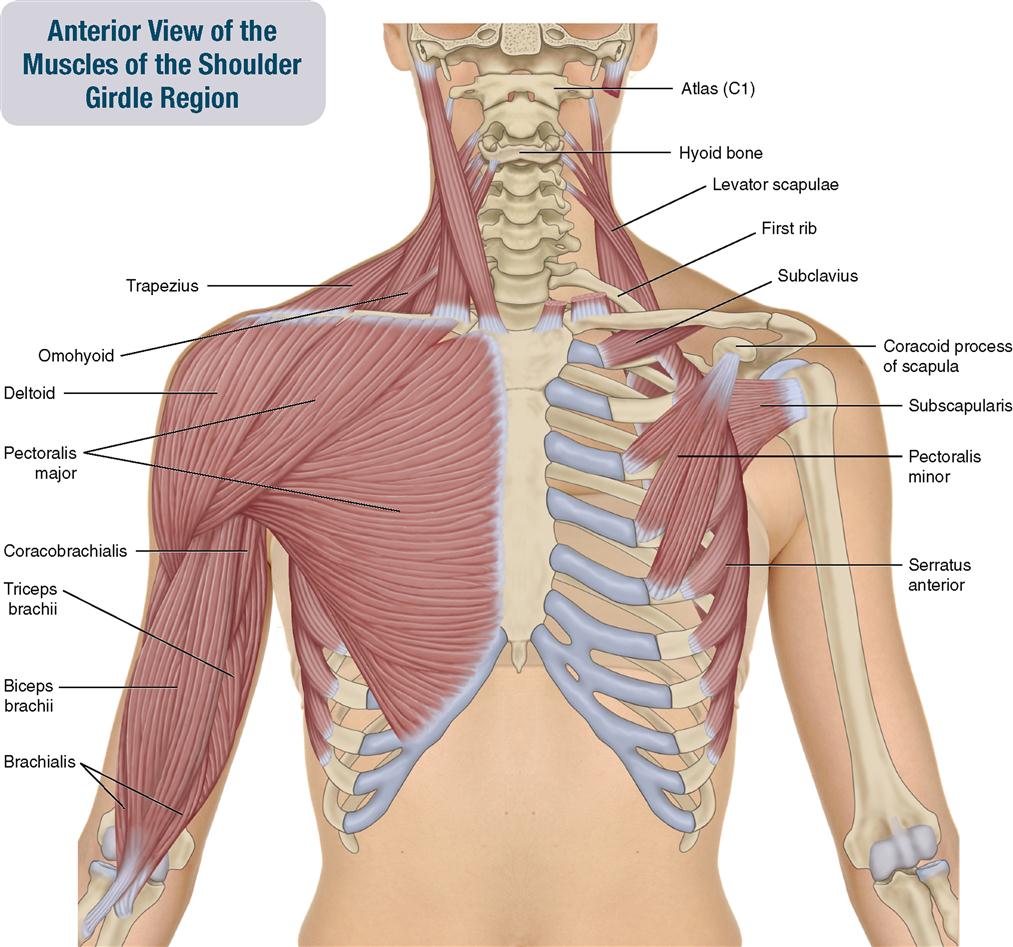
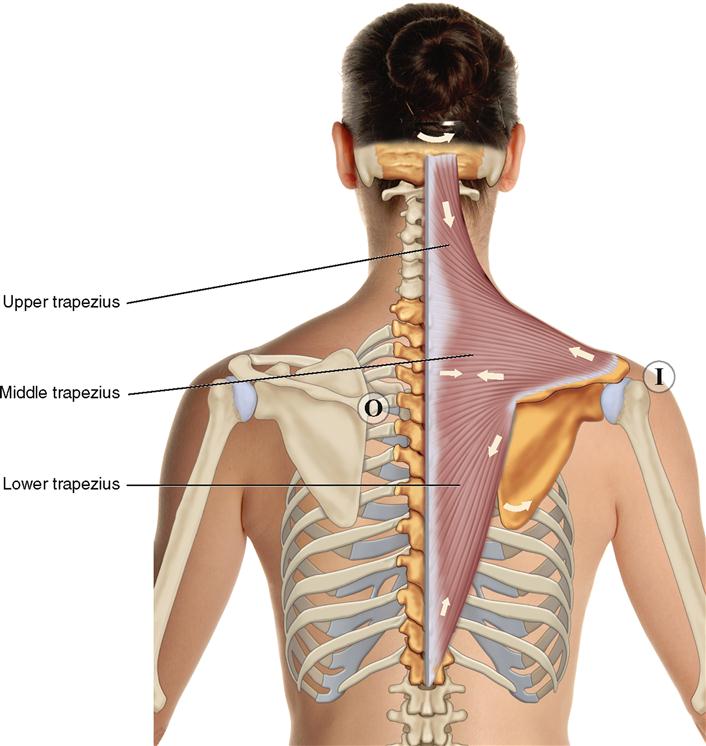
 ).
).











